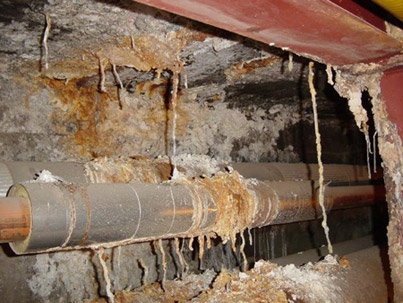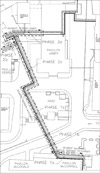Renewing old McGill

Three underground service tunnels on campus need to be completely rebuilt. Work on them is scheduled to begin early in May.
Good "old" McGill. There is something truly special about being part of a venerable institution. With all due respect to less august places of higher learning, studying or working amidst these storied stone buildings, some of them more than 150 years old, enriches the university experience.
That said, being venerable brings challenges. Some of the buildings and different infrastructure elements that lend the downtown campus its old-school charm are in urgent need of maintenance and repair.
Over the next two years, a series of deferred maintenance projects will be undertaken on the parts of the campus infrastructure most in need of attention. Chief among these are four underground service tunnels housing power supply and telecommunication cables and compressed air, steam and refrigeration pipes.
"Some of these tunnels are 100 years old or more," said Robert Stanley, Project Director at Facilities Development, the McGill department responsible for directing and overseeing the work. "They are in a dramatic state of decay, and without immediate attention could lead to parts of the campus losing power, heat or communications lines. We have no choice, we have to do it," Stanley said.
Going underground
Three of the four tunnels need to be completely rebuilt, which will require the excavation and demolition of parts of them. The work will begin shortly with the transplanting of approximately 30 trees from two of the work sites.
The largest and potentially most disruptive site for users of the downtown campus is in the area bordered by the McConnell Engineering Building, Dawson Hall, the Ferrier Building and the James Administration Building. At the beginning of June, work will begin on a service tunnel running between the McConnell and Ferrier buildings. Some preparatory work in the small park near the Milton Gate, under which the tunnel runs, has already taken place.
The service tunnel work is being done in different phases over the summer and autumn of both 2008 and 2009, with the first phase taking place between June and the end of October 2008 at the McConnell end of the tunnel. The road running around the Macdonald and McConnell buildings will be closed to traffic while the work takes place. Traffic will be re-routed to the road that passes in front of the James building. There will be two-way traffic on this normally one-way route until the 2008 work is completed. The "aquarium" corridor in the McConnell Building, under which a section of tunnel also runs, will be closed for most of the summer. It is scheduled to re-open in mid-August.
In 2009, when work is being done on the Ferrier end as well as a Ferrier-James branch of the same tunnel, the traffic situation will be reversed, with the road there closed and two-way traffic circulating on the street in front of Macdonald and McConnell. Flaggers will be in place to help traffic flow as smoothly as possible, but drivers and pedestrians alike are urged to exercise caution on the roads and near the work sites. Most sidewalks will be accessible except those directly at work sites, but parking spaces on both roads will be lost during the June-October period in both 2008 and 2009. Bicycle racks at work sites will also have to be moved to more secure areas.
Site under construction
Much of the work has been purposely scheduled for the summer months, when most classes are out and fewer people are on campus. Those who remain, however, can expect dust and noise, especially in June, when workers use large machinery and jackhammers to excavate the rock and demolish parts of the concrete tunnels.
Work on a similar tunnel running from the southernmost part of the Leacock Building to a duct bank under McTavish St. will also be performed in the summer of 2008, starting in July. The entrance to Morrice Hall adjacent to the work (northwest corner) will be accessible via a specially built temporary bridge over McTavish St. Facilities Development is working closely with Building Services, individual building directors, Security, Parking Services and other McGill stakeholders to limit disruptions and ensure the safety of building users throughout the course of the work.
"We can't avoid having some disruptions through parts of the school term," Stanley said, "but we want to limit those disruptions as much as possible."
Facilities Development is also working closely with the City of Montreal on the logistics for work on a duct bank running under University St. between the Otto Maass Chemistry Building and Royal Victoria College Residence. The reconstruction of the structure will require an excavation across the full width of University St. Work will also take place on a pair of service tunnels under Pine Ave. at the top of University St. Drainage issues in a relatively new tunnel will be addressed, while a tunnel no longer in service running alongside it will be filled with concrete to prevent it from caving in. Work at that site will all be done underground.
Deferred maintenance projects are also planned for no less than a dozen McGill buildings over the next 12 to 15 months. One of the biggest of these is the retrofitting of Burnside Hall, the second-tallest building at McGill after the McIntyre Medical Building, for modern fire safety. The work includes the installation of a sprinkler system.
Landscaping work at affected green spaces will commence once all tunnel work is done. In the case of the park over the McConnell-Ferrier tunnel, that means fall 2009.
Facilities Development is currently preparing a notification system to communicate closings and other disruptions to members of the McGill community.


